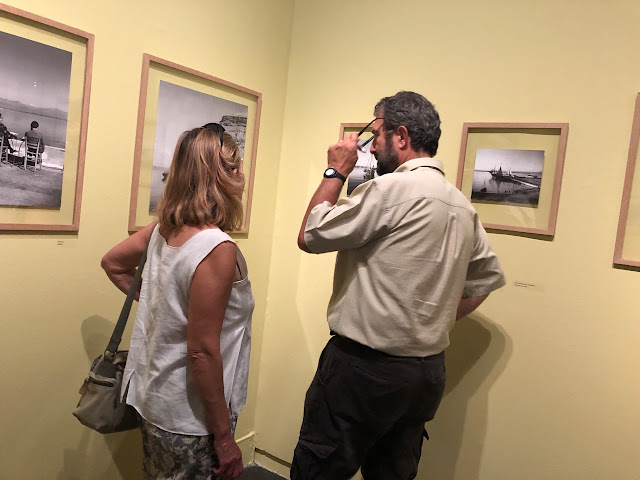Friday, June 29, 2018
Thursday, June 28, 2018
Fish in Oahu
A welcome break from the AOGS Conference, at only a 20-minute drive from Honolulu: the Hanauma Bay Nature Preserve, a fish paradise within an ancient volcano caldera.
Διάλειμμα από το συνέδριο AOGS - σε 20 λεπτά απόσταση, η προστατευμένη περιοχή του κόλπου Χανάουμα, ένας παράδεισος ψαριών, μέσα σε μια αρχαία ηφαιστειακή καλντέρα.
Chasing a humuhumunukunukuapuaa ...
A colourful parrot fish
Saturday, June 23, 2018
Friday, June 22, 2018
Thursday, June 21, 2018
Wednesday, June 20, 2018
Mauna Kea Observatories
Mauna Kea Observatories. The 4,200 meter high summit of Mauna Kea in Hawaii houses the world's largest observatory for optical, infrared, and submillimeter astronomy.
The twin W. M. Keck Observatory
Gemini Telescope (left) and UH 2.2 meter Telescope (right)
Caltech Submillimeter Observatory
The Canada-France-Hawaii Telescope (left) and the Gemini Telescope (right)
Gemini Telescope
The NASA Infrared Telescope Facility
Keck Observatory
From left to right: Caltech Submillimeter Observatory, James Clerk Maxwell Telescope, Subaru Telescope and Keck Observatory
The Gemini Telescope (right) and the Canada-France-Hawaii Telescope (left)
The Canada-France-Hawaii Telescope
The Submillimeter Array
Tuesday, June 19, 2018
Kilauea lava rivers and laze
Laze rising to the sky. Laze, a combination of the words lava and haze, is the product of a chemical reaction that happens when molten, 1200 degree Celsius lava hits the ocean. The sea water gets boiled, creating a potentially deadly mix of hydrochloric acid, steam, and tiny volcanic glass particles. The lava rivers covered a distance of 10 km from the fissure to the coast.
Video 1
On the picture below, a helicopter is visible hovering above the lava river
Videos from a doors-off helicopter flight above the lava rivers on June 14, 2018
Video 2
Video3
Video 4
Monday, June 18, 2018
Sunday, June 17, 2018
Subscribe to:
Comments (Atom)

















































